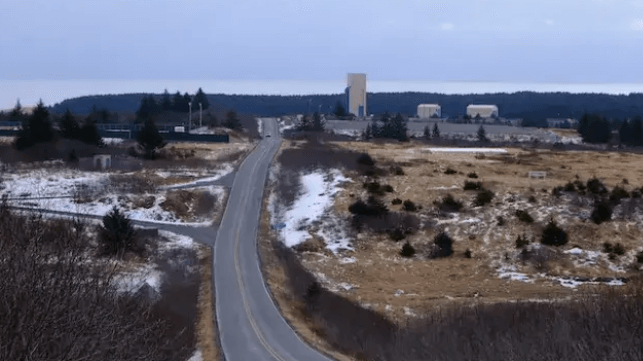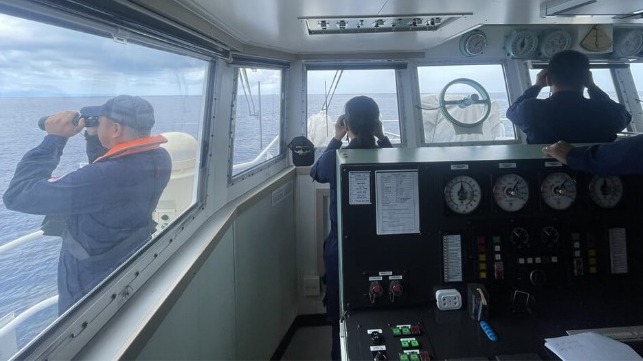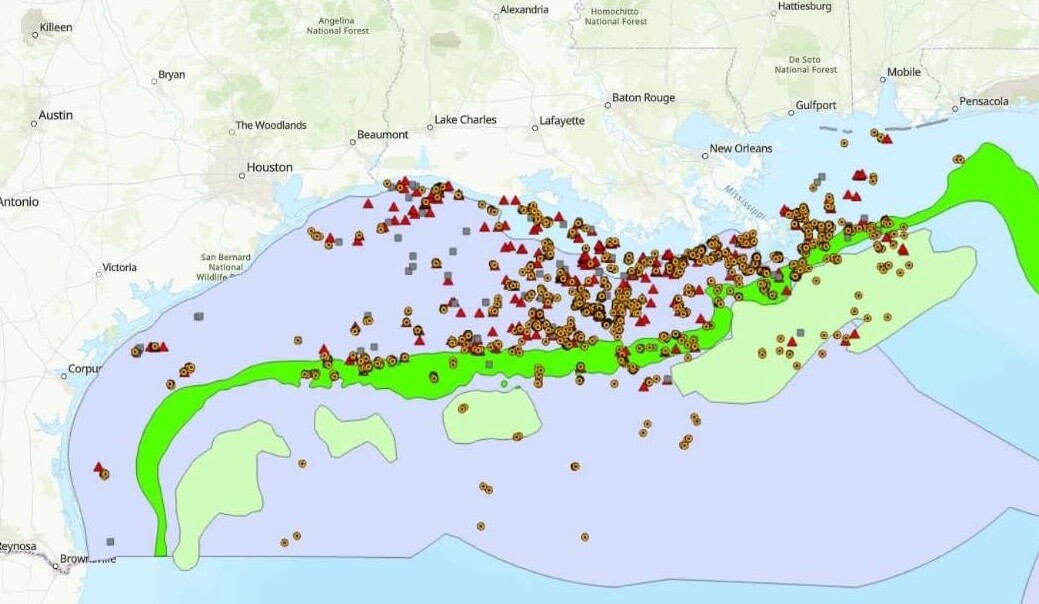How a Gulf of Alaska Test Range Helped Israel Defend Itself From Iran
Alaska’s little-known spaceport revolutionized military conflict

At the Pacific Spaceport Complex in Kodiak, Alaska, in 2019, the Israelis successfully tested an anti-ballistic missile system that intercepts weapons in space. Now, in the Israel-Hamas War, it’s finally being used in battle, pushing military conflict above the atmosphere.
Kodiak Island is better known for its salmon-guzzling grizzly-bears than its rockets. But the forested Alaskan isle, separated from the mainland by the Shelikof Strait, has had a small commercial spaceport since 1998. Kodiak’s Pacific Spaceport Complex is intended for launching small satellites into polar orbit and got its start as the country’s first commercial spaceport. More famous facilities, like Cape Canaveral Space Force Station and Vandenberg Space Force Base, are government-operated spaceports. Yet the majority of the 31 launches that have taken place at Pacific Spaceport Complex since its opening have, in fact, been for the military or government, including one foreign one: Israel. The shift towards supporting launches by the men in black has frustrated many of Kodiak’s residents, as I discovered when I visited the island last month.
Why is there a spaceport on Kodiak Island?
Kodiak might seem an unlikely spot for launching satellites into orbit. Spaceports are generally built closer to the equator to take advantage of the additional thrust provided by the Earth, which spins faster in the middle. Since the entire planet rotates once every 24 hours, objects on the equator are advancing 1670 km per hour. Those halfway to the North or South Pole are moving a mere 1170 km per hour, or 30 percent slower. Consequently, more rocket fuel is needed to launch from poleward locations to achieve the whopping speed of 40,270 kilometers per hour necessary to achieve escape velocity.
This advantage of equatorial launch sites, however, is negated when trying to launch into polar orbit. Polar orbits are used by satellites performing Earth observation or reconnaissance missions that image the entire planet. Each time a polar-orbiting satellite circles the Earth, it passes over the North or South Pole, providing full planetary coverage. Polar orbits are becoming increasingly popular as both governments and commercial firms seek to provide up-to-date satellite imagery of the entire planet.
Some northern countries and states like Alaska are hoping that satellite operators might turn to spaceports located in the world’s northern latitudes to reach polar orbits. Among them are not only the Pacific Spaceport Complex, but other other up-and-coming competitor spaceports like Andøya in northern Norway, Esrange in northern Sweden, and SaxaVord Spaceport in Shetland, in the northernmost bit of the United Kingdom.
Despite the seeming advantages of polar spaceports, many of the commercial actors that the Pacific Spaceport Complex has sought to attract have swallowed the extra fuel costs of launching from the south and transported their rockets and satellites to spaceports like southern California’s Vandenberg Space Force Base. These are much closer to major infrastructure and engineering facilities in places like Los Angeles and don’t require arranging complicated, expensive logistics to transport material to the Arctic or sub-Arctic by plane or barge. The cold waters around Kodiak Island make for some of the world’s richest fish and crab stocks, as made famous in the television show Deadliest Catch, but are notoriously harsh for boats. The turbulent weather around the Emerald Isle also means that rain, fog, and wind all challenge the reliability of the airport for satellite operators, which often have short windows in which to prepare and undertake missions.
The difficulties that the Pacific Spaceport Complex has encountered in attracting market share means that only nine of their 31 launches have been orbital. The rest have been suborbital launches, or those that fly into space but do not reach escape velocity and return to the atmosphere before fully orbiting Earth. While these might sound less than spectacular, military conflict is rapidly evolving in suborbital space, with one key innovator at the helm: Israel.
Anti-intercontinental ballistic missile testing on Kodiak
In July 2019, three suborbital launches went soaring into the blackness of space over the inky waters of the Gulf of Alaska surrounding Kodiak. These launches had one purpose: to test the Israel Defence Ministry’s Arrow 3 Interceptor Missile System. The state-of-the-art technology built by Israel Atmospheric Industries and troubled U.S. aerospace company Boeing employs “exoatmospheric hypersonic anti-ballistic missiles,” which can intercept and destroy incoming long-rang missiles above the atmosphere. The system provides a top layer of defense that complements Israel’s more famous “Iron Dome”, which shields the country from rockets and bombs fired closer to the ground.
Between 2008-2021, the U.S. government contributed $1.27 billion to Israel’s Arrow 3 program. Its support for Israel’s Arrow system has been consistent, with development first beginning in 1986. In 2004, the Naval Air Station Point Mugu Missile Test Center in southern California hosted tests of Arrow 2, which uses an explosive to destroy incoming medium- to long-range missiles. In contrast, Arrow 3 destroys incoming long-range missiles through interception alone in the exoatmosphere, or the region just above the Earth’s atmosphere. They must be designed to operate in a vacuum, requiring complicated engineering to deal with low pressure [1].
In June 2017, during a Congressional hearing, U.S. Vice Admiral James Syring explained the role that Kodiak would play in testing Arrow 3:
Admiral Syring: Yes, sir. We are close partners with Israel on development of their systems, system engineering in particular, and testing support also. And I have been intimately involved with them on David's Sling and Arrow, the more recent version of Arrow 3. And, frankly, that interceptor is now up into the exoatmosphere, and it has significant range constraints within the Mediterranean. And one of the better places to test is in Alaska, from Kodiak, and we plan to do that next year.
Mr. Coffman: Okay. So the Arrow 3 is designed to defeat the over-the-horizon capability of the Iranians. Am I correct in that?
Admiral Syring: Sir, it is designed to defeat the exoatmospheric ballistic missile threat from Iran.
In other words, given the crowded airspace around the Mediterranean, Israel was unable to test Arrow 3 to its full capacities. Moshe Patel, director of the Israel Missile Defense Organization, said in March 2019 during a panel discussion in Washington, D.C.: “Arrow 3 is too big for the state of Israel…It is supposed to be good against nuclear threats that are coming from Iran. (But) we have limitations in our arena to conduct flight tests because of safety.”
That’s where remote Kodiak, Alaska – an island home to 13,500 people and several Alaska Native villages – came in. In 2016, Alaska Aerospace Corporation and the U.S. Missile Defense Agency announced a five to six year, $80.4 million contract, which led to a follow-on award in 2022 for $111 million. The Missile Defense Agency sponsored Israel’s interceptor testing at the Pacific Spaceport Complex, along with the construction of new accommodation for 210 people. The spaceport is about an hour’s drive from the main town of Kodiak on a windy road, which makes commuting difficult. There is little housing in the area save for some cabins in the nearby community of Pasagshak and a fairly large yet oddly underutilized lodge nicknamed the “space hotel”.
Craig Campbell, the former CEO of Alaska Aerospace Corporation, a State of Alaska public corporation that operates the spaceport, offered some further details about the missile system being tested and what would need to be built to support it. “This is much more of a mobile system, so we’re going to put in a life support area where soldiers can actually live and operate as if they were deployed into real life conditions to utilize the system.” Those real life conditions would ultimately be the deserts of Israel rather than Kodiak’s spruce-covered capelands.
A synagogue and Kosher food on Kodiak
In 2016, Alaska Aerospace Corporation issued a request for proposals (RFP) to build the “life support area” for the Israelis. Controversy swirled over the RFP, which required the housing to be destroyed after the testing ended. While there was a lower bid from Bernie Karl, who operates the lodge “space hotel” along with the popular Chena Hot Springs outside Fairbanks, Alaska, his proposal said the housing would be “demobilized” rather than destroyed. Alaska Aerospace Corporation went with the other bid. Although it was $3.5 million more, it met the Missile Defense Agency’s demand that the housing be removed. (There were also rumors of nepotism around the winning bid, which this short Anchorage Daily News story and podcast from 2018 explore).
To accommodate 210 people, the developers plowed a new area and brought in mobile housing units stacked two stories high. The “life support area” also entailed building a makeshift synagogue, bringing in a Kosher cook, and putting up barbed wire fencing since, in the words of one resident recalling the development, the Israelis were “super-paranoid.” After the accommodations were initially completed, they had to be moved and re-erected as regulators said that they were too close to the launch pad.
After all the hullaballoo over constructing the accommodations, a year passed. On a clear summer day in 2019, the missile testing went off without a hitch. The flags of the U.S., Israeli, and two involved missile defense agencies fluttered in the glow of the blast zone.
Immediately following the suborbital launches, U.S. Senator Dan Sullivan (R-Alaska) stated, “The test this weekend shows the strength of U.S.-Israeli cooperation on missile defense. It should send a strong message to our common adversary, Iran, about our ability to deter any aggressive act against our allies in the region.” He continued, “I want to commend all those who invested the thousands of hours of preparation that went into producing this successful test. In particular, I also want to thank the people of Kodiak who have been host to American and Israeli officials working to conduct this historic test.”
After the Israelis successfully completed their testing, all of the accommodations were ripped out of the ground. (Concerns expressed in a letter to the editor of the Kodiak Daily Mirror expressing worry that the facility could become a permanent Israeli base were unfounded.) When I visited the spaceport, all that remained of their former facility was a bunch of wires sticking out of the ground. You would never really know that the Israel Defence Ministry, with the backing of the U.S. Missile Defense Agency, had been here, on Alaskan public lands, testing pioneering anti-ballistic missile technology. One Israeli expert even claimed that Arrow 3 could be adapted to shoot down satellites.
 Little remains of the “life support area” built to accommodate 210 people, many of them members of the Israel Defense Forces, at the Pacific Spaceport Complex in Kodiak, Alaska. Photo: M. Bennett, March 2022.
Little remains of the “life support area” built to accommodate 210 people, many of them members of the Israel Defense Forces, at the Pacific Spaceport Complex in Kodiak, Alaska. Photo: M. Bennett, March 2022.
\Israel-Hamas War: The first-ever instance of space warfare
While the Israelis left Kodiak in 2019, they continued to make progress on the Arrow 2 and 3 systems back on the shores of the Mediterranean. Four years later, on October 31, 2023 – weeks after the outbreak of war between Israel and Hamas – the country used the Arrow 2 system tested in California to shoot down a ballistic missile fired by the Iran-backed Houthis at Eilat, Israeli’s southernmost city, from some 1,600 kilometers away. According to The Telegraph, Arrow 2 intercepted the Houthi missile high over the Red Sea above the Kármán line, which is generally identified as where space starts, 100 kilometers above sea level. The Israel Defense Forces released a video of the launch, which culminated in the first-ever instance of space warfare with the destruction of the Houthi missile.
A little over a week later on November 9, the IDF announced Arrow 3’s first successful interception. Israel has continued to use the Kodiak-tested Arrow 3 throughout the war. A video posted to Reddit two weeks ago by the user captures the exoatmospheric interception. In a separate thread, another user who observed the blast – clearly a military rocket enthusiast – wrote, “The explosion was really big, widely visible and colorful considering how high it was. Video doesn’t do it justice. Probably 5-10 times the apparent size of the full moon. One of the coolest things I’ve ever seen.”
For all the hopes since the Space Age that the heavens be kept for “peaceful purposes,” as stated in the 1967 Outer Space Treaty, there is no doubt now of their militarization.
The Arctic as global military frontier and vanguard
Since the Cold War, the Arctic has proven central to U.S. and Russian (previously Soviet) missile defense systems, with each superpower guarding against projectiles that might be lobbed across the frozen North Pole. Now, thanks to Kodiak’s Pacific Spaceport Complex, the region has proven key for testing missile defense systems based in the arid Middle East, guarding against weapons that pierce the exosphere.
In August 2023, Israel sold Arrow 3 to Germany for $3.5 billion after receiving U.S. approval, representing the largest-ever arms deal for Jerusalem. In the wake of the Russia-Ukraine War, Germany is seeking to boost its defenses against a revanchist neighbor to the east. Berlin may have a bit more breathing room thanks to the Kodiak-tested system.
The benefits of military testing in the Arctic snake out to American allies far and wide, who conduct their operations on the ground and above the atmosphere. The Arctic military frontier has not just expanded to the rest of the globe, but to space. The Arctic, meanwhile, must deal with the legacy of militarization that leaves behind barren land, debris, and often toxic waste – all while making sure to rip anything useful, like accommodation, out of the ground. The testimony delivered by Sarah Lukin, member of the Afognak Native Corporation’s board of directors (and now president of Cook Inlet Region, Inc.), to Congress during a hearing on cleaning up the country’s Cold War legacy sites captured how the military haunts the north, long after it has left:
“World War II, Japan’s invasion of the Aleutians, and the Cold War had profound impacts in Alaska. If Alaska’s expansive forests and tundra could talk, what stories would they tell? We would hear of 55-gallon drums full of toxic materials dumped in lakes, of unexploded ordnances on the tundra, a stream with lead batteries in it, Cold War legacies often hidden from view, but slowly decaying, leaching into the ground and water.”
Mia Bennett is an assistant professor in the University of Washington's Department of Geography. She researches the politics of infrastructure development in the Arctic by combining fieldwork and critical remote sensing, and she is a frequent contributor to The Maritime Executive.
This article appears courtesy of Cryopolitics and may be found in its original form here.
Further reading
[1] Sullins, G. (2001). Exo-atmospheric intercepts: Bringing new challenges to Standard Missile. Johns Hopkins APL Technical Digest, 22(3): 260-274.
The opinions expressed herein are the author's and not necessarily those of The Maritime Executive.














